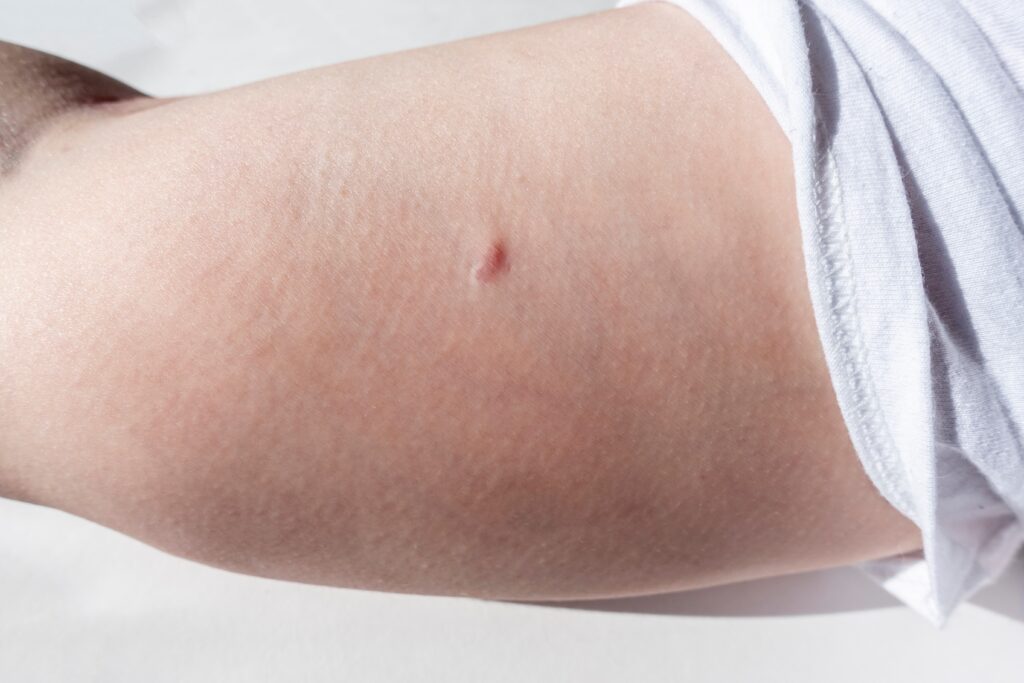|
Nadrich Accident Injury Lawyers is no longer actively retaining Nexplanon victims. |
|---|

Nexplanon is an etonogestrel-based birth control implant that is placed in the arm under the skin. The implant is advertised as being over 99% effective and being just as effective as the pill without the inconvenience of taking a pill every day.
Nexplanon is the successor to Implanon. It works in the same way, but it uses an updated applicator to reduce implantation errors and is easier to find if it migrates inside the body.
However, while the implant is over 99% effective, it is not 100% effective, meaning that, uncommonly, some women may become pregnant while on Nexplanon.
If you have become pregnant while on Nexplanon, you may be wondering if you can sue over your pregnancy. This article will go into detail about whether you can sue if you get pregnant while on Nexplanon.
Can You Sue if You Get Pregnant on Nexplanon?
California treats wrongful pregnancy cases as ordinary tort cases, meaning that if a plaintiff suffers financial damages such as medical bills because a defective product or somebody else’s negligence caused a wrongful pregnancy, the negligent party or the manufacturer of the defective product is financially liable for the damages suffered.
In Stills v. Gratton, 127 Cal. Rptr. 652, 659 (Cal. Ct. App. 1976), plaintiff Hannah Stills filed a medical malpractice lawsuit after a failed abortion procedure led to her giving birth. The court rules that the plaintiff “should be permitted to recover all the damages to which she is entitled under ordinary tort principles.”
However, while California law allows for damages for wrongful pregnancy to be recovered in wrongful pregnancy lawsuits, it is unlikely that such lawsuits will be successful with regard to getting pregnant while on Nexplanon.
According to Nexplanon’s label, six out of 923 subjects in a Nexplanon clinical trial became pregnant.
Those who suffer damages can successfully sue the manufacturers of products in California if those products were defective, or if negligence related to the products caused the damages. However, while six out of 923 is a low number, it is still high enough. It would be very difficult to prove that pregnancy was due to a Nexplanon defect or due to negligence, since six out of 923 subjects who were given non-defective implants in a clinical trial, in the absence of negligence, still became pregnant.
While you may find it challenging to bring a successful lawsuit against Nexplanon for becoming pregnant while using it, Nexplanon is no stranger to lawsuits. Currently, lawsuits are being filed against Merck, the manufacturer of Nexplanon, alleging the implant causes blood clots that have had potentially fatal consequences.
Can You Get Pregnant on Nexplanon?
How Long Does Nexplanon Last?
How Does Nexplanon Work?
• They stop the release of eggs from the ovary
• They thicken cervical mucus, which may prevent sperm from reaching eggs
• They change the lining of the uterus
How Effective Is Nexplanon?
How Long Does It Take for Nexplanon to Work?
How Long After Nexplanon Removal Can I Get Pregnant?
Does Nexplanon Have Estrogen?
How Is Nexplanon Inserted?
Do You Ovulate on Nexplanon?
Do Antibiotics Affect Nexplanon?
How Can an Injury Lawyer Help If You Get Pregnant While on Nexplanon?
Whether you hire an injury lawyer in California or a South Florida personal injury lawyer, they can help by assessing whether the pregnancy was due to product defects or medical negligence, gathering evidence, and navigating specific laws on medical malpractice or product liability. They’ll build a case to seek compensation for damages such as medical expenses or emotional distress.

